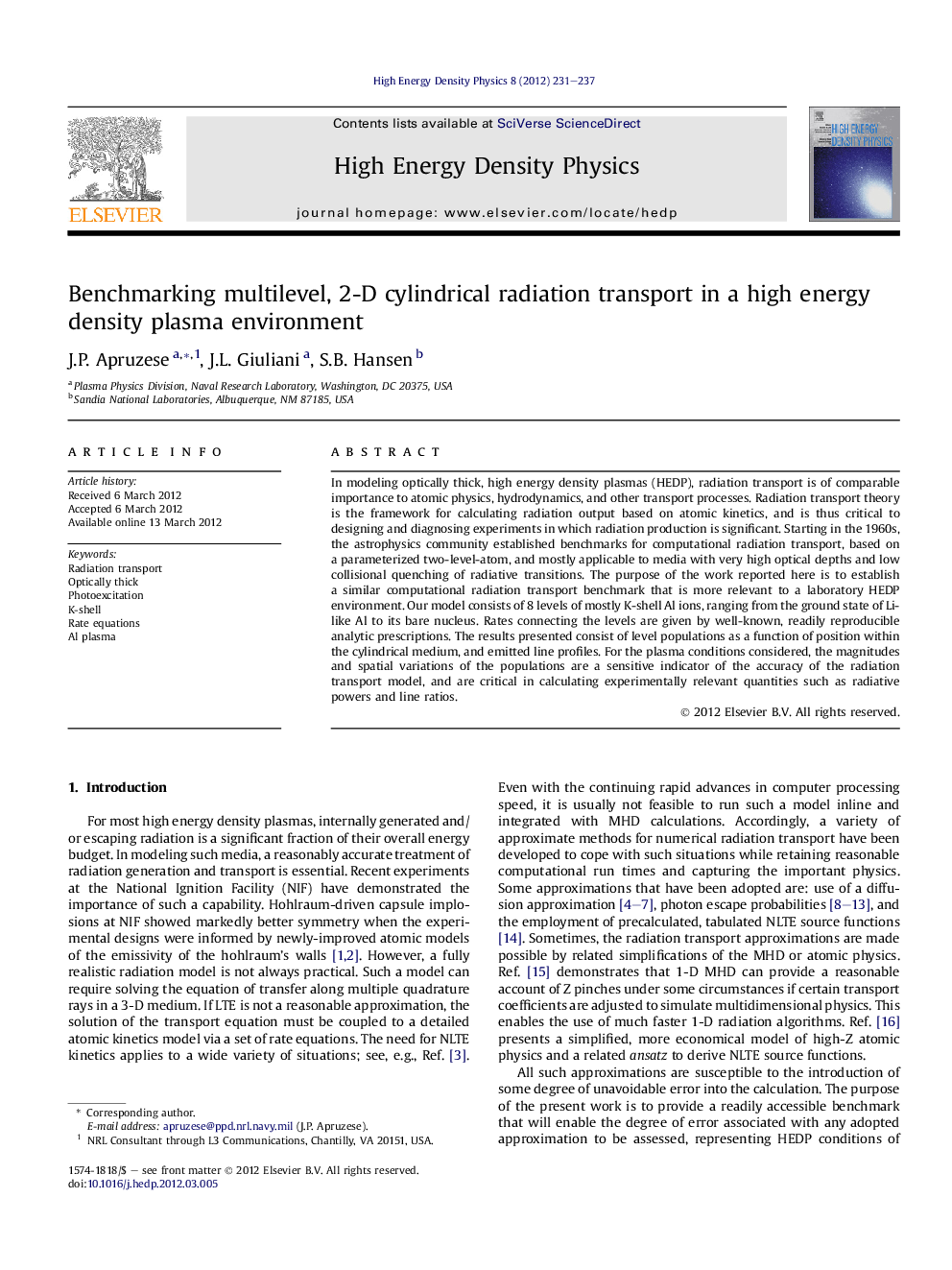| Article ID | Journal | Published Year | Pages | File Type |
|---|---|---|---|---|
| 1772574 | High Energy Density Physics | 2012 | 7 Pages |
In modeling optically thick, high energy density plasmas (HEDP), radiation transport is of comparable importance to atomic physics, hydrodynamics, and other transport processes. Radiation transport theory is the framework for calculating radiation output based on atomic kinetics, and is thus critical to designing and diagnosing experiments in which radiation production is significant. Starting in the 1960s, the astrophysics community established benchmarks for computational radiation transport, based on a parameterized two-level-atom, and mostly applicable to media with very high optical depths and low collisional quenching of radiative transitions. The purpose of the work reported here is to establish a similar computational radiation transport benchmark that is more relevant to a laboratory HEDP environment. Our model consists of 8 levels of mostly K-shell Al ions, ranging from the ground state of Li-like Al to its bare nucleus. Rates connecting the levels are given by well-known, readily reproducible analytic prescriptions. The results presented consist of level populations as a function of position within the cylindrical medium, and emitted line profiles. For the plasma conditions considered, the magnitudes and spatial variations of the populations are a sensitive indicator of the accuracy of the radiation transport model, and are critical in calculating experimentally relevant quantities such as radiative powers and line ratios.
